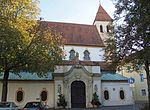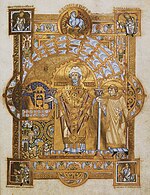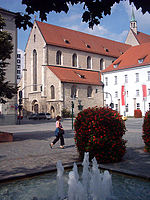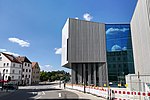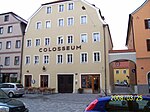Regensburg Cathedral
1538 establishments in the Holy Roman Empire16th-century Roman Catholic church buildings in GermanyChurches completed in 1320Gothic architecture in GermanyJews and Judaism in Regensburg ... and 5 more
JudensauRegistered historic buildings and monuments in BavariaRoman Catholic cathedrals in BavariaRoman Catholic churches completed in 1538Roman Catholic churches in Regensburg

Regensburg Cathedral (German: Dom St. Peter or Regensburger Dom), also known as St. Peter's Cathedral, is an example of important Gothic architecture within the German state of Bavaria. It is a landmark for the city of Regensburg, Germany, and the seat of the Catholic Diocese of Regensburg.
Excerpt from the Wikipedia article Regensburg Cathedral (License: CC BY-SA 3.0, Authors, Images).Regensburg Cathedral
Domplatz, Regensburg Altstadt
Geographical coordinates (GPS) Address Website External links Nearby Places Show on map
Geographical coordinates (GPS)
| Latitude | Longitude |
|---|---|
| N 49.019444444444 ° | E 12.098333333333 ° |
Address
Dom Sankt Peter
Domplatz 1
93047 Regensburg, Altstadt
Bavaria, Germany
Open on Google Maps


